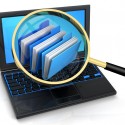 If you’re a partner at a small firm, you know that every new position that’s created and filled matters exponentially more than a single hiring at a big firm. Payroll will spike with each new addition, and everyone will work closely together. It’s therefore imperative to hire someone who can wear different hats, who’s an enthusiastic “team player” and who’s genuinely likable.
If you’re a partner at a small firm, you know that every new position that’s created and filled matters exponentially more than a single hiring at a big firm. Payroll will spike with each new addition, and everyone will work closely together. It’s therefore imperative to hire someone who can wear different hats, who’s an enthusiastic “team player” and who’s genuinely likable.
Here at our three-year-old firm, Cogent Legal, my partner Mike Kelleher and I recently created a key position. We knew we had to find the right person with that flexible skill set, enthusiasm and great personality. We found him and are excited to introduce him: Derek Ryan, Cogent’s new Director of Business Development.
Derek is truly an interesting and likable guy whose background as the longtime GM at JAMS makes him well suited to understand attorneys’ needs and to deliver services not just for trial but also for ADR—an area that has yet to embrace the potential of graphics and technology for case presentation.
We thought you’d like to meet Derek because he has some great ideas for attorneys and an unusual background. So, we hope you’ll read and enjoy these 5 Questions for Derek Ryan: [Read more...]
 A central case database where litigators track issues, witnesses, events, documents, to-do items and more is a vital tool for making e-discovery and litigation more efficient.
A central case database where litigators track issues, witnesses, events, documents, to-do items and more is a vital tool for making e-discovery and litigation more efficient. I recently discovered another way to easily set up your iPad for wireless presentation display. I’ve written before about
I recently discovered another way to easily set up your iPad for wireless presentation display. I’ve written before about



Follow Cogent Legal
Subscribe by Email